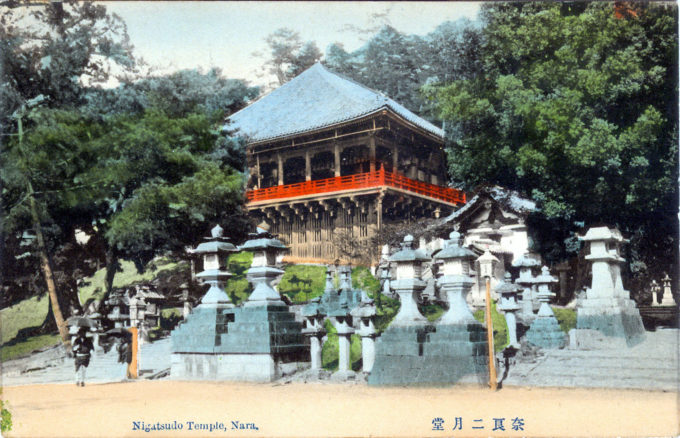
Nigatsudo Temple, Nara, c. 1920, “clinging to the hill-side like a swallow’s nest, and enshrining a tiny copper image of Kwan-non.” (Overland Monthly, February 1910)
“Nigatsu-dō (‘The Hall of the Second Month’) is one of the important structures of Tōdai-ji, a temple in Nara, Japan. Nigatsu-dō is located to the east of the Great Buddha Hall, on the hillside of Mount Wakakusa. It includes several other buildings in addition to the specific hall named Nigatsu-dō.
“Nigatsu-dō was founded by a monk by the name of Sanetada in 752, but the Buddhist monk Jitchu, a pupil of Rōben, later introduced a repentance service dedicated to the image of the eleven-faced Bodhisattva, Kannon in 760. It has taken place as an annual rite since 760, known as Shuni-e (lit. ‘Second-Month Service’), without any break. At present, it starts on 1 March and ends on the 15th of the month.
“The original construction of Nigatsu-dō hall is estimated to have completed only somewhere between 756 and 772. Nigatsu-dō was destroyed in 1667 due to a fire. Re-construction of Nigatsu-do was completed two years later, in 1669. In 1944, Nigatsu-dō was chosen by Japan as one of the most important cultural aspects of the country.”
– Wikipedia

